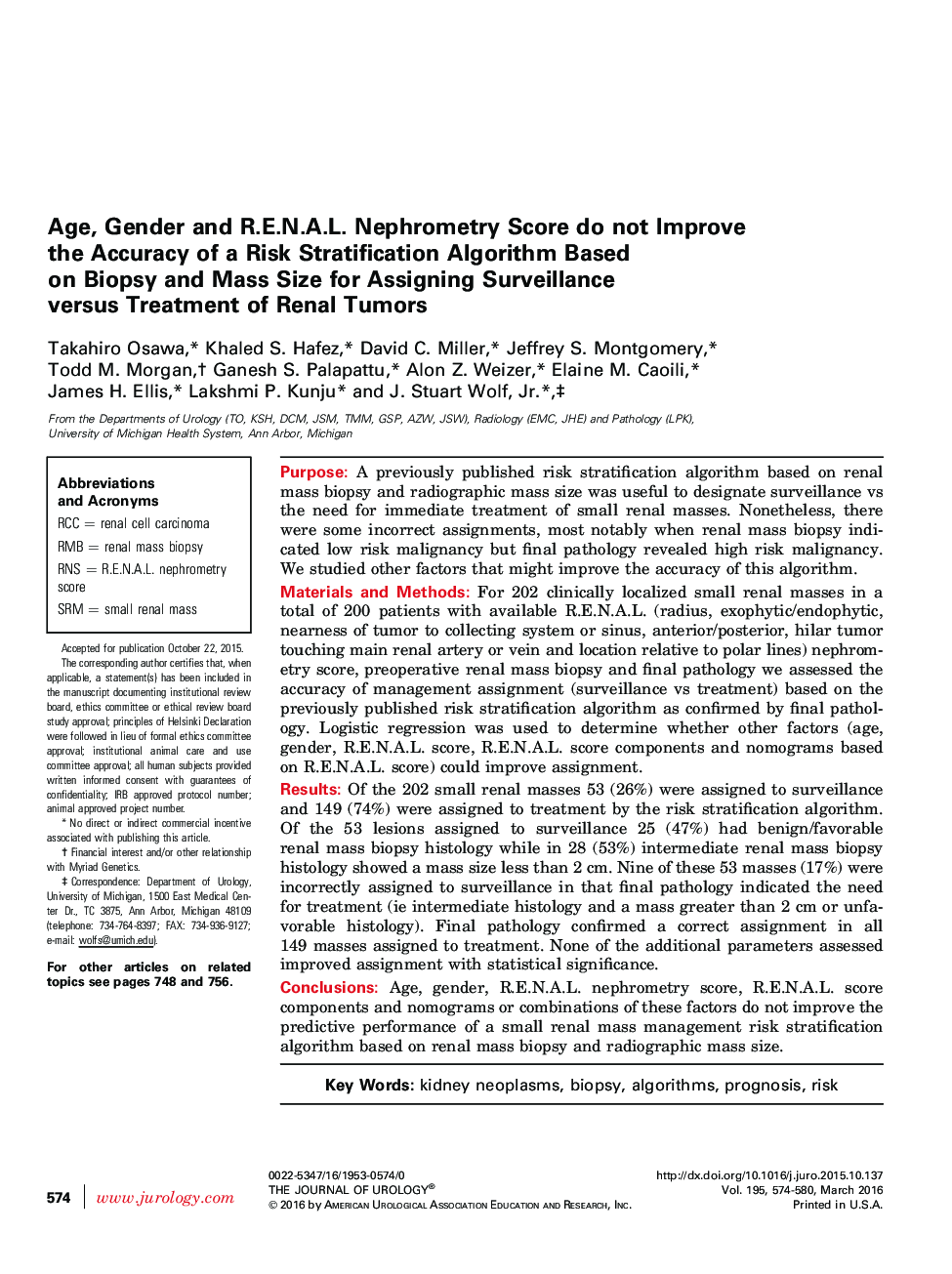| کد مقاله | کد نشریه | سال انتشار | مقاله انگلیسی | نسخه تمام متن |
|---|---|---|---|---|
| 3859036 | 1598880 | 2016 | 7 صفحه PDF | دانلود رایگان |

PurposeA previously published risk stratification algorithm based on renal mass biopsy and radiographic mass size was useful to designate surveillance vs the need for immediate treatment of small renal masses. Nonetheless, there were some incorrect assignments, most notably when renal mass biopsy indicated low risk malignancy but final pathology revealed high risk malignancy. We studied other factors that might improve the accuracy of this algorithm.Materials and MethodsFor 202 clinically localized small renal masses in a total of 200 patients with available R.E.N.A.L. (radius, exophytic/endophytic, nearness of tumor to collecting system or sinus, anterior/posterior, hilar tumor touching main renal artery or vein and location relative to polar lines) nephrometry score, preoperative renal mass biopsy and final pathology we assessed the accuracy of management assignment (surveillance vs treatment) based on the previously published risk stratification algorithm as confirmed by final pathology. Logistic regression was used to determine whether other factors (age, gender, R.E.N.A.L. score, R.E.N.A.L. score components and nomograms based on R.E.N.A.L. score) could improve assignment.ResultsOf the 202 small renal masses 53 (26%) were assigned to surveillance and 149 (74%) were assigned to treatment by the risk stratification algorithm. Of the 53 lesions assigned to surveillance 25 (47%) had benign/favorable renal mass biopsy histology while in 28 (53%) intermediate renal mass biopsy histology showed a mass size less than 2 cm. Nine of these 53 masses (17%) were incorrectly assigned to surveillance in that final pathology indicated the need for treatment (ie intermediate histology and a mass greater than 2 cm or unfavorable histology). Final pathology confirmed a correct assignment in all 149 masses assigned to treatment. None of the additional parameters assessed improved assignment with statistical significance.ConclusionsAge, gender, R.E.N.A.L. nephrometry score, R.E.N.A.L. score components and nomograms or combinations of these factors do not improve the predictive performance of a small renal mass management risk stratification algorithm based on renal mass biopsy and radiographic mass size.
Journal: The Journal of Urology - Volume 195, Issue 3, March 2016, Pages 574–580